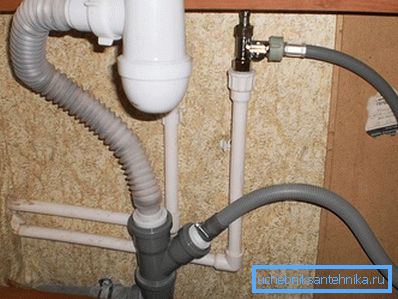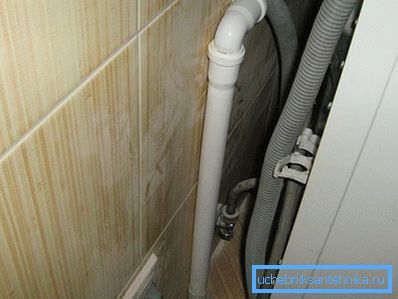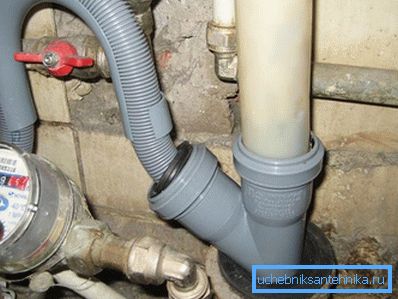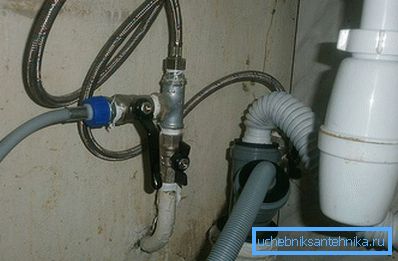How to connect the drain hose of a washing machine
When buying a new home appliances always have questions about its commissioning. So, having purchased a washing machine, it is necessary to carry out work on connecting to communications. For her work requires the supply of water and the withdrawal of wastewater. Such works are not difficult if you know how to perform them. This article will explain how to connect the drain hose of a washing machine.
Variants of organization of the washing machine
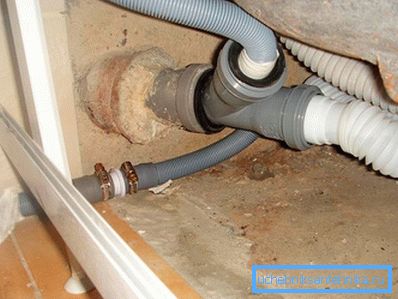
The washing machine in its work uses water from the water supply system, which, after washing, must be drained. To do this, each device is equipped with a special drain hose. Connecting the device to the water supply system usually does not cause big problems. For these purposes, the hose comes complete with a washing machine. It is connected to the tap. To organize the discharge of the washing machine into the sewer in two ways:
- temporary. With this method, the drain hose during operation of the washing machine is simply fixed to the edge of the sink or bath.
- stationary. In this case, the hose is connected directly to the sewage system using a tie-in. To do this, complete with a device has a curved plastic guide. A hose is inserted into it and suspended from the wall, due to which a hydraulic lock is formed from the bent hose and water will not flow out of the machine by gravity.
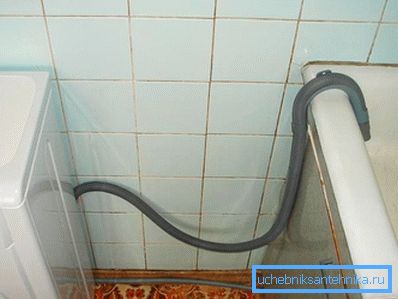
Most owners of washing machines prefer to use the stationary method of connecting the drain. This method is much more convenient. First, you will not forget to hang the drain hose in the sink or bathtub. Secondly, this method is more aesthetic. The drain hose will be hidden, which will improve the appearance of the room.
Nuances in organizing the drain
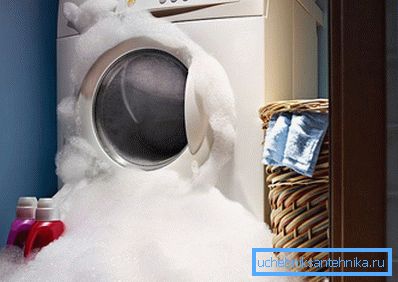
Whatever way of organizing the drain of the washing machine you choose, making it your own hands, it is important to follow the recommendations of experts. This will help to avoid breakdowns of expensive equipment. Here are some of these recommendations:
- if the equipment is not equipped with a special non-return valve that only allows water to pass in one direction, then the drain hose should be located at a certain height. Each manufacturer in the documentation indicates the minimum and maximum height at which the end of the hose should be. If you do not comply with these recommendations, the equipment will work inefficiently and may break;
- if the drain hose is short and its end is missing from the nearest sewer pipe, it can be extended, but it is not recommended to do this for more than one and a half meters. The fact is that pumping water from the washing machine is done with the help of a pump. If you increase the drain hose to a greater length, the pump may not cope with its task. The device will have to work with a large load, in this case, expensive repairs can not be avoided;
- When using a fixed or temporary connection, do not allow the end of the hose to be submerged in water.
The works on the stationary connection of the drain hose to the sewage system will look as follows. First, prepare the necessary materials. For work you will need:
- sewer drainage;
- siphon;
- rubber sealing cuff;
- means for sealing the compound (for example, silicone gel).

Further, the work itself is carried out. First, it checks the performance of the system itself. If blockages are detected, they are eliminated. Secondly, a sewer outlet is installed (if it is not already mounted). Then a siphon is installed into it, using a rubber cuff, into which the drain hose of the washing machine is inserted.
If the use of a siphon is not foreseen, then the drain hose is connected directly to the sewer. It also uses a rubber cuff. The end of the hose must be firmly fixed, but it should not go into the outlet more than 50 mm. The hose itself will hang in the shape of the letter "S". This form will play the role of a siphon. It is important that the tip of the “S” is at least 50 cm from the floor. In this case, an air gap is formed inside, which will be a check valve.

Even if you do not care about the presence of a water seal in the drain hose, you still need to raise it to the specified height - this will prevent the drainage of water from the washing machine by gravity.
There is another way to connect the drain hose of the washing machine to the sewer system. If the washing machine is installed near the sink, then you can connect to its sink. This method will help to avoid additional costs for the purchase of a siphon. Drain the sink disassembled and mounted sewer tee. Then it is connected to the drain hose with a rubber cuff.
Any of these methods can be done independently. The main thing is to reliably seal all connections. Otherwise, you can flood not only your bathroom or toilet, but the neighbors below.
Video
This video shows how to properly connect the drain washing machine hose:
A photo
